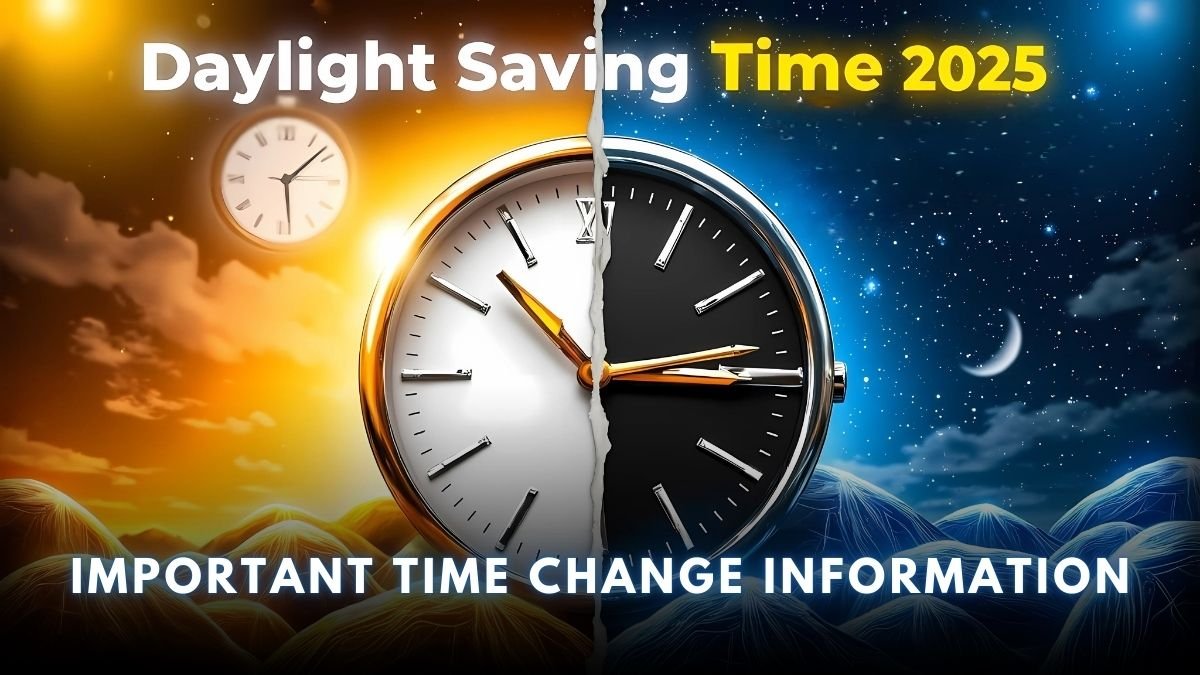Daylight Saving Time (DST) is used during the summer season to take advantage of maximum natural light. This time management system is applicable in the US, Canada and almost all European countries. In the year 2025, the clocks will be moved forward by one hour on March 9 and on November 2, they will be moved back by one hour again.
What is Daylight Saving Time?
During the summer season, the clocks are moved forward by one hour to make maximum use of daylight. This allows people to work in natural light for longer hours, which saves electricity and promotes energy conservation.
- In spring and summer, the clocks are moved forward by one hour.
- In autumn and winter, the clocks are moved back by one hour again.
When will Daylight Saving Time start and end in 2025?
In the year 2025, daylight saving time will begin at 2:00 am on March 9 (Sunday) and end at 2:00 am on November 2 (Sunday).
Dates of daylight saving time (2025-2028)
| Year | Start Date | End Date |
|---|---|---|
| 2025 | March 9 (Sunday) | November 2 (Sunday) |
| 2026 | March 8 (Sunday) | November 1 (Sunday) |
| 2027 | March 14 (Sunday) | November 7 (Sunday) |
| 2028 | March 12 (Sunday) | November 12 (Sunday) |
Global effects of daylight saving time

Daylight saving time is applied in more than 70 countries and affects 40% of the world’s population. More than 1 billion people experience this time change every year.
- North America
- United States: Most states will be in daylight saving time from March 9 to November 2, 2025. However, Hawaii and Arizona (except the Navajo Nation) do not implement this system.
- Canada: Most provinces implement daylight saving time, but Saskatchewan has not adopted it.
- Europe
- Daylight saving time in the European Union (EU) will be in effect from March 30, 2025, to October 26, 2025.
- Oceania
- Australia: Daylight saving time lasts from the first Sunday in October to the first Saturday in April in New South Wales, Victoria, South Australia, Tasmania and the Australian Capital Territory.
- New Zealand: Here daylight saving time is applicable from the last Sunday in September to the first Sunday in April.
- India and other countries
- India: Daylight saving time is not applicable here because a uniform time zone (IST) is followed throughout the country.
- Japan and China: Daylight saving time is not applicable in these countries either.
Advantages and disadvantages of daylight saving time
Advantages:
- ✔ Energy savings – Due to getting natural light for a longer time, electricity consumption is reduced.
- ✔ Economic growth – People stay outside for a longer time, which boosts business and the economy.
- ✔ Improved road safety – Due to more light during the day, the possibility of accidents is reduced.
Disadvantages:
- ❌ Effect on sleep – The biological clock (circadian rhythm) is affected, which can increase stress and fatigue.
- ❌ Difficulty adjusting to time – People may have trouble adjusting to the new schedule.
- ❌ Health problems – Some people may face problems like headaches, fatigue and insomnia.
How to prepare for daylight saving time?
- ✔ Get into the habit of sleeping earlier – Try to sleep 15-20 minutes earlier every day a week before daylight saving time starts.
- ✔ Wake up at the same time every day – This will help the body adjust to the new schedule.
- ✔ Get morning sunlight – Morning light helps the body adjust quickly.
- ✔ Avoid caffeine and alcohol – Both of these things can affect the quality of sleep.
Conclusion
Daylight saving time is an energy conservation system that makes the most of daylight. However, it can also pose health challenges. In countries like India, it is not applicable, but companies doing international business and communication need to take into account the global time change.
FAQs
Q. When does Daylight Saving Time start in 2025?
A. Daylight Saving Time begins on March 9, 2025, at 2:00 a.m., when clocks move forward by one hour.
Q. When does Daylight Saving Time end in 2025?
A. It ends on November 2, 2025, at 2:00 a.m., when clocks move back by one hour.
Q. Which countries observe Daylight Saving Time?
A. The U.S., Canada, most of Europe, Australia, and New Zealand observe DST, while countries like India, China, and Japan do not.
Q. Why is Daylight Saving Time used?
A. DST helps maximize daylight hours, reducing energy consumption and promoting outdoor activities.
Q. Does Daylight Saving Time affect sleep patterns?
A. Yes, adjusting the clock can disrupt sleep cycles, leading to temporary fatigue and adjustment difficulties.



